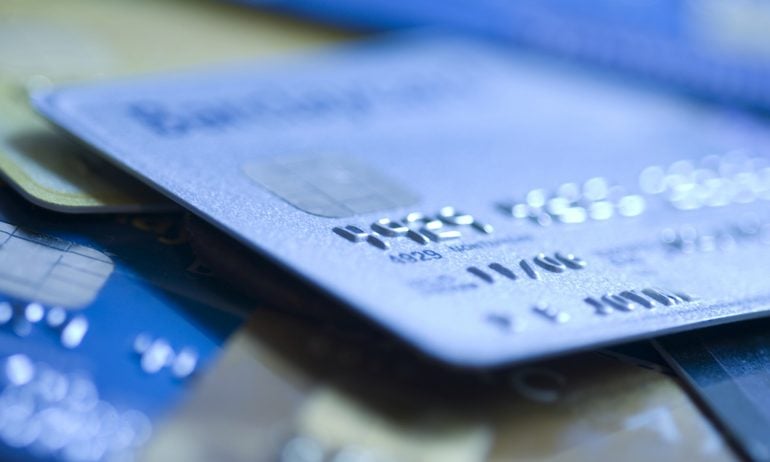The Big Problem With Easy-to-Get Subprime Credit Cards
Subprime specialist issuers market credit cards that are much more expensive than secured cards.

Many or all of the products on this page are from partners who compensate us when you click to or take an action on their website, but this does not influence our evaluations or ratings. Our opinions are our own.
The First Premier Bank credit card is marketed as a solution for people with bad credit who can’t qualify for a “regular” card. And it’s definitely not a regular card.
For one thing, it’s a lot more expensive.
Before you even get the card, you have to pay a $95 processing fee. Then there’s an annual fee of $75, $100 or $125 in the first year, depending on the credit limit. The next year and beyond, you have an annual fee of $45 or $49, plus monthly servicing fees that add up to $75 or $124.80 a year.
What do you get for all that cash? “A genuine MasterCard credit card,” according to the card’s website. One with a small credit limit of $300, $400 or $500 and a high annual percentage rate of 36%.
First Premier is a subprime specialist issuer — a credit card company that markets products specifically designed for people with bad credit. These companies sell the dream of owning a “regular” credit card to people who are having trouble finding it elsewhere. Some of these cards are available as unsecured, partially secured and secured cards, but they can come with high fees that can drain you of cash. In fact, unsecured cards from subprime specialist issuers will end up costing you an average of almost $400 more than a secured credit card — one that requires a security deposit — from a mass market issuer over the course of three years, according to a recent NerdWallet study.
Fees, fees, fees
If you get an offer for a credit card and want to see how expensive it is, start by looking at its fee chart, or Schumer box, which you can generally find in direct mail offers or on the card’s website under “Terms and Conditions” or “Rates and Fees.”
One sign that a card is excessively expensive: The fees you’re required to pay in the first year after you open the card, including the annual fee, add up to 25% of the credit limit. That’s the maximum allowed under the federal Credit Card Act of 2009. So a card with a $500 limit could have a maximum of $125 in fees the first year, one with a $400 limit could charge $100 and so on. The First Premier card bumps right up against the limit with its annual fee, as do other so-called fee-harvester cards, like the Surge, Verve and Matrix from Continental Finance Co. and the First Access card and Total Visa cards from Mid America Bank & Trust Co.
With major issuers, who generally provide only secured credit cards to people with bad credit, the 25% rule isn’t an issue. The biggest expense is the $200 or $300 deposit, but you get that money back when you close your account in good standing or convert it to an unsecured card. Some mass-market secured cards have annual fees — usually less than $35 — but there are a handful of no-fee options, too. Because the collateral eliminates much of the issuer’s risk, the issuer can afford to offer better prices. If you pay your balance in full and on time every month and get your deposit returned, one of these cards could effectively help you build credit for free.
For subprime specialist issuers, though, the 25% threshold comes up a lot — which is why their unsecured or partially secured cards may sound like a good deal but really aren’t. And subprime specialist issuers don’t stop there: Many also charge higher fees after the first year and before you open the account, when the 25% rule doesn’t apply.
For example, the First Premier card charges its $95 processing fee before you open the account, placing it outside the 25% limit. That was made legal by a 2013 change in consumer credit card protections. The monthly servicing fees don’t take effect until the second year. Combined with the annual fee, those charges can make the second year’s fees as much as 40% of the card’s credit limit.
The card isn’t as expensive in the first year as some of the old-school fee-harvester cards that the Credit Card Act put the kibosh on, but its modus operandi appears to be the same: Charge as much as possible.
The cost of risk
First Premier says high fees and interest rates are just the cost of doing business with borrowers with bad credit, who are more likely to default on payments.
“There’s only so much [risk] we can offset in that first year” through fees, says Darrin Graham, vice president of marketing for First Premier Bank. ”I’m not going to tell you it’s not because of the law. But we try to offset more of that risk in the second year.”
Graham stresses that the terms of his bank’s cards are fully disclosed and not meant to deceive customers. “We’re not out there to fool anybody,” he says. “If you didn’t read everything, and you get a statement with fees and you don’t understand it, we’ll do a full refund.”
Nevertheless, the company skates right up to the edge of consumer protection laws. And others seem to be operating from the same playbook.
Last year, the Consumer Financial Protection Bureau fined Continental Finance Co. and ordered it to refund about $2.7 million in illegal fees to cardholders. The problem: The company exceeded the 25% limit by charging some consumers up to $49.50 in “paper statement fees,” according to the CFPB. Those fees would have been legal had the company allowed consumers to opt in to them, as its materials said it would. But the CFPB found that the company hadn’t. Continental didn’t respond to multiple requests for comment.
For borrowers with bad credit, there are better deals
If subprime specialist issuers are competing at all, they seem to be engaged in a race to the bottom, banking on a captive audience of subprime customers with few credit card options. But if you have bad credit and are looking for a credit card, secured cards from mass-market issuers are a better option, and they’re improving all the time.
For example, the Capital One Platinum Secured Credit Card, which has an annual fee of $0, allows some cardholders to open an account with a limit higher than the initial deposit. And the Discover it® Secured Credit Card offers rewards and a way to graduate to an unsecured card. Instead of going for a card that charges hundreds of dollars in fees in the first year, consider putting that money toward a security deposit instead.
If you have bad credit, these lower-fee cards — the ones competing against each other with better benefits — can help you rebuild your credit for a reasonable price. Ignore those high-fee subprime specialist card offers. They aren’t worth your time.
This article was written by NerdWallet and was originally published by Forbes.
Find the right credit card for you.
Whether you want to pay less interest or earn more rewards, the right card's out there. Just answer a few questions and we'll narrow the search for you.
